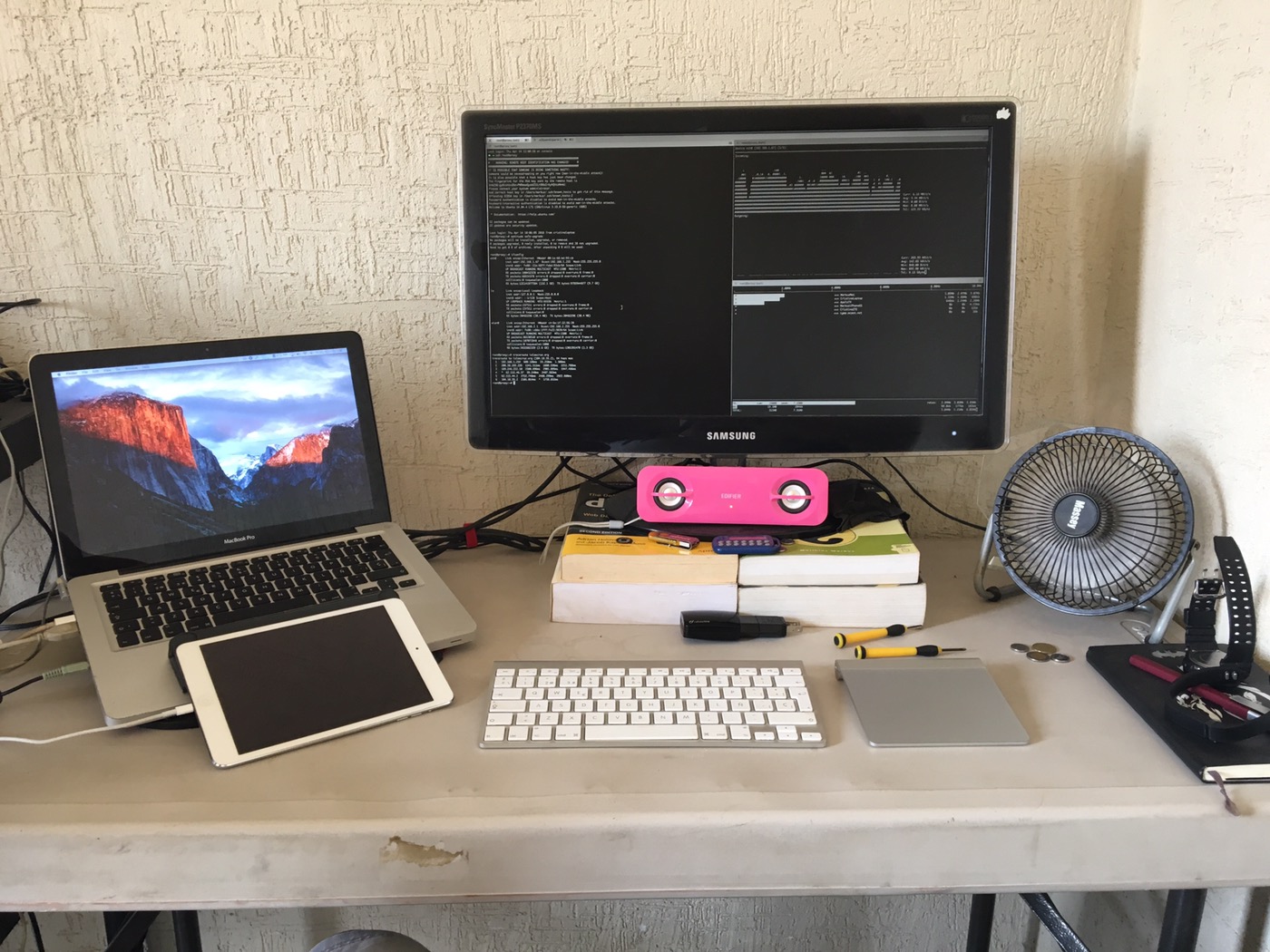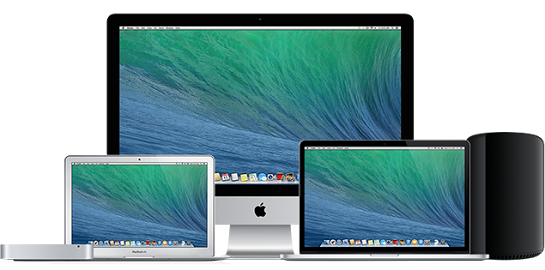
![]()

![]()

![]()

Give it a try, for $1 dollar you get 5 books, for $8 dollars you get 7 books more, and for $15 dollars you get 16 books in PDF, mobi or ebook. They can also email them to your kindle ;-). Did I mentioned they are DRM free? ?
Get a bundle of Unix ebooks and support charity!
Source: Humble Book Bundle: Unix presented by O’Reilly (pay what you want and help charity)
![]()

It’s alive !! Although with issues, right now (and in the picture) the battery is not charging, actually, for the system it is not present. I think the problem might be a fuse that burned, I as thinking that the power center was defective and was not providing enough power to charge the battery, but more probably the issue is with the fuse and the SMC is preventing the power to reach the logic board, then battery is not charging.
So, under normal operation the battery is not charging and the power supply is not providing any energy, how is that the computer is on?. No, is not on the leftover of the battery.
Its a small trick to boot without taking care of the SMC, the good is that it boots and is letting me work, the bad is that no battery or any other sensor works, is like if the SMC were just not present.
And if the sensor are not present then there are no thermal indicators and the system fan goes to 6000 rpm to keep the computer cool, but noisy.
So, for my next trick I need a Torx screwdriver, take the motherboard apart and try to find the burned fuse.
Ho, for those that don’t know how to boot on this mode:
Update: The procedure to start without checking the SMC was wrong.
![]()
![]()
Los que tienen un Mac pagan 600 euros por el ordenador y 600 euros por llevar la manzanita.
— Cuñado 🇪🇸 (@CunadoDeTuiter) December 27, 2015
I think that Macs are expensive computers, but any other computer with the same hardware should cost more or less the same.
Yes, you can get cheaper computers with the same processor, more storage and the same amount of ram, but is not just CPU-RAM-HDD what makes a computer a good computer. Is everything that is around those.

The display, the quality of construction, the durability of the keyboard, the battery and I don’t mean just getting 10 hours of battery, I mean how many years that battery is going to work fine.
I have the same Mac for almost 5 years, I upgraded the RAM from 4GB to 8. And changed the 5400 rpm HDD to an SSD (which I highly recommend). But aside from that everything else is the same.
Now the other side of the coin. I had “PC” laptops that at most were with me for two years and I had to replace the keyboard. A couple of HP/Compaq, one Dell and one Acer. The battery died in the first year. Were they cheaper? Yes, but at the end I had to get two or three laptops in five years. Not cool.
The operating system is another key piece. Whether you like it or not, the best desktop operating system seems to be OS X. The power of UNIX and simplicity not matched by any other OS. Windows is arelly good operating system but in my opinion not as good. Linux have the freedom, the choices, but let’s be honest, is not the easiest OS.
Of course Windows and Linux are great OS, and I believe they are superior than OS X in other fields, Linux is great as a server, Windows is no doubt the Desktop OS for PCs and gaming, but OS X is better as a desktop OS (of course, in a Mac)
So, what makes a Mac a Mac is the mixture between a well done hardware and the software. You don’t spend €600 for just for the machine and €600 for the apple logo, you get great hardware and great software that works as expected, that lasts, and ensures that will keep working among upgrades.
![]()
The main problem when compiling is the tons of disk access that compile involves from compiling, linking, stripping etc… if you have a regular hard disk you know this may take a lot of time, most if the project is large. If you have an SSD the problem is not the speed, but still the lots of read/write access even when SSDs are pretty much more reliable that they were years ago.
A simple fix is to use ram disk. I’m not going to tell you how to do it in linux, because in linux you basically mount tmpfs in a directory and you are done, but in OS X this may be a bit tricky. In particular if we talk about macports.
Macports build directory is /opt/local/var/macports/build, so we need to mount a ramdisk here. But first we need to create it.
hdiutil attach -nomount ram://2097152 /dev/disk10
That should create a ramdisk with about 1GB, if you want to use less or more ram you can of course tune the “ram” parameter to fit what’s best for you, it doesn’t means the size in bytes/kbytes, it mean the number of 512 bytes sectors. Then format and mount in /opt/local/var/macports/build:
newfs_hfs /dev/disk10 sudo mount -t hfs /dev/disk10 /opt/local/var/macports/build
And you are done, just use macports as usual. Please note that there might be some ports that fails to build because some of them expect the build directory to be in the same storage .
After you are done compiling you probably want to delete that ramdisk, just use hdiutil detach $dev for that.
![]()